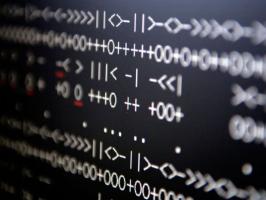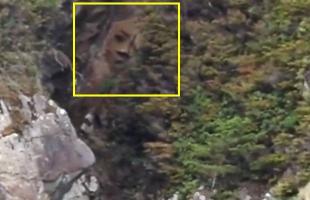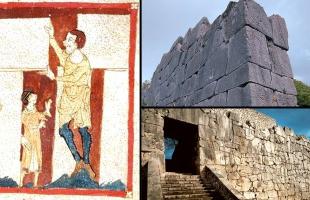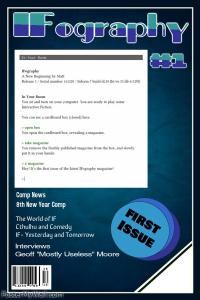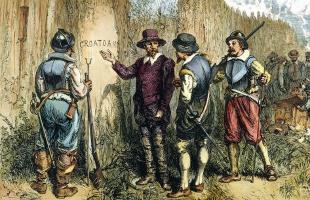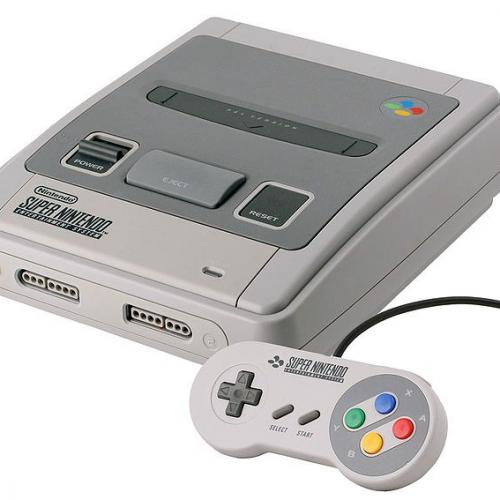Copy Link
Add to Bookmark
Report
Chaos Digest Volume 01 Numero 67

Chaos Digest Vendredi 2 Juillet 1993 Volume 1 : Numero 67
ISSN 1244-4901
Editeur: Jean-Bernard Condat (jbcondat@attmail.com)
Archiviste: Yves-Marie Crabbe
Co-Redacteurs: Arnaud Bigare, Stephane Briere
TABLE DES MATIERES, #1.67 (2 Juillet 1993)
File 1--40H VMag Number 8 Volume 2 Issue 4 #004-005(1) (reprint)
Chaos Digest is a weekly electronic journal/newsletter. Subscriptions are
available at no cost by sending a message to:
linux-activists-request@niksula.hut.fi
with a mail header or first line containing the following informations:
X-Mn-Admin: join CHAOS_DIGEST
The editors may be contacted by voice (+33 1 47874083), fax (+33 1 47877070)
or S-mail at: Jean-Bernard Condat, Chaos Computer Club France [CCCF], B.P.
155, 93404 St-Ouen Cedex, France. He is a member of the EICAR and EFF (#1299)
groups.
Issues of ChaosD can also be found from the ComNet in Luxembourg BBS (+352)
466893. Back issues of ChaosD can be found on the Internet as part of the
Computer underground Digest archives. They're accessible using anonymous FTP:
* kragar.eff.org [192.88.144.4] in /pub/cud/chaos
* uglymouse.css.itd.umich.edu [141.211.182.53] in /pub/CuD/chaos
* halcyon.com [192.135.191.2] in /pub/mirror/cud/chaos
* ftp.cic.net [192.131.22.2] in /e-serials/alphabetic/c/chaos-digest
* cs.ubc.ca [137.82.8.5] in /mirror3/EFF/cud/chaos
* ftp.ee.mu.oz.au [128.250.77.2] in /pub/text/CuD/chaos
* nic.funet.fi [128.214.6.100] in /pub/doc/cud/chaos
* orchid.csv.warwick.ac.uk [137.205.192.5] in /pub/cud/chaos
CHAOS DIGEST is an open forum dedicated to sharing French information among
computerists and to the presentation and debate of diverse views. ChaosD
material may be reprinted for non-profit as long as the source is cited.
Some authors do copyright their material, and they should be contacted for
reprint permission. Readers are encouraged to submit reasoned articles in
French, English or German languages relating to computer culture and
telecommunications. Articles are preferred to short responses. Please
avoid quoting previous posts unless absolutely necessary.
DISCLAIMER: The views represented herein do not necessarily represent
the views of the moderators. Chaos Digest contributors
assume all responsibility for ensuring that articles
submitted do not violate copyright protections.
----------------------------------------------------------------------
Date: Tue May 11 09:24:40 PDT 1993
From: 0005847161@mcimail.com (American_Eagle_Publication_Inc. )
Subject: File 1--40H VMag Number 8 Volume 2 Issue 4 #004-005(1) (reprint)
40Hex Number 8 Volume 2 Issue 4 File 004
-=PHALCON/SKISM=- Presents CheckAv
PD War Collection Program 3
By Dark Angel
Once again, not an incredibly impressive program, but it is still
quite useful. It PutAv's a serial number, pkzips a test file, with the
pkzip -! option, then unzips it. It logs the line that has serial
number. This program requires pkzip, pkunzip, putav and avs.dat from
findav15.
It is a very crude program, but it was done in quite a hurry, as
I am going away for a while. Run it in a RAM disk, as it is much
better!
-----------------------------------------------------------------------------
n checkav.com
e 0100 BA F7 02 B4 4A BB 00 10 CD 21 72 34 BA 83 02 E8
e 0110 6C 01 BA 14 03 E8 66 01 B4 0A BA 9A 04 CD 21 BA
e 0120 3C 03 80 3E 9A 04 00 74 76 BB 9C 04 8B D3 A0 9B
e 0130 04 98 03 D8 C6 07 00 B8 00 3D CD 21 BA 5E 03 93
e 0140 72 5D B4 3F B9 3C 00 BA BC 04 CD 21 87 D7 BA 7D
e 0150 03 0B C0 74 4A B8 00 42 33 C9 99 CD 21 FC BA 9F
e 0160 03 B9 3C 00 B0 0D F2 AE 0B C9 74 33 BA D3 03 E8
e 0170 0C 01 4F C6 05 24 BA BC 04 E8 02 01 C6 05 0D 8B
e 0180 D7 81 EA BA 04 89 16 F8 04 B8 00 42 33 C9 CD 21
e 0190 BA D6 02 E8 E8 00 BA 82 04 E8 BA 00 E8 13 00 E8
e 01A0 DC 00 B4 41 BA 8A 04 CD 21 B4 41 BA 8F 04 CD 21
e 01B0 CD 20 B4 3F B9 0D 00 BA EF 03 CD 21 0B C0 74 3A
e 01C0 BA E5 03 E8 B8 00 E8 A2 00 E8 32 00 BE EF 03 BF
e 01D0 09 04 B9 0B 00 F3 A4 BE 03 04 E8 52 00 E8 8B 00
e 01E0 BE 20 04 E8 49 00 E8 82 00 BE 34 04 E8 40 00 E8
e 01F0 79 00 BE 51 04 E8 37 00 EB B8 BA B8 03 C3 53 B4
e 0200 3C BA FE 03 33 C9 CD 21 93 B4 40 8B 0E F8 04 49
e 0210 BA BC 04 CD 21 B4 40 B9 0C 00 BA EF 03 CD 21 B4
e 0220 40 B9 01 00 BA FD 03 CD 21 B4 3E CD 21 5B C3 50
e 0230 53 51 52 1E 06 55 57 89 26 FC 04 8C 16 FA 04 CD
e 0240 2E FA 2E 8E 16 FA 04 2E 8B 26 FC 04 FB 5F 5D 07
e 0250 1F 5A 59 5B 58 C3 53 B8 00 3D CD 21 73 06 B4 3C
e 0260 33 C9 CD 21 93 B4 3E CD 21 5B C3 B4 06 B2 FF CD
e 0270 21 74 0A 3C 1B 75 06 BA D9 02 E9 22 FF C3 B4 09
e 0280 CD 21 C3 43 68 65 63 6B 41 56 20 76 65 72 73 69
e 0290 6F 6E 20 31 2E 30 0D 0A 62 79 20 44 61 72 6B 20
e 02A0 41 6E 67 65 6C 20 6F 66 20 50 48 41 4C 43 4F 4E
e 02B0 2F 53 4B 49 53 4D 0D 0A 50 72 65 73 73 20 45 53
e 02C0 43 20 74 6F 20 61 62 6F 72 74 20 61 74 20 61 6E
e 02D0 79 20 74 69 6D 65 0D 0A 24 45 53 43 61 70 65 20
e 02E0 64 65 74 65 63 74 65 64 2E 20 20 41 62 6F 72 74
e 02F0 69 6E 67 2E 0D 0A 24 45 72 72 6F 72 20 72 65 61
e 0300 6C 6C 6F 63 61 74 69 6E 67 20 6D 65 6D 6F 72 79
e 0310 2E 0D 0A 24 45 6E 74 65 72 20 74 68 65 20 6E 61
e 0320 6D 65 20 6F 66 20 74 68 65 20 66 69 6C 65 20 74
e 0330 6F 20 70 72 6F 63 65 73 73 3A 20 24 0D 0A 4E 6F
e 0340 20 69 6E 70 75 74 20 64 65 74 65 63 74 65 64 2E
e 0350 20 20 41 62 6F 72 74 69 6E 67 21 0D 0A 24 0D 0A
e 0360 46 69 6C 65 20 6E 6F 74 20 66 6F 75 6E 64 2E 20
e 0370 20 41 62 6F 72 74 69 6E 67 2E 0D 0A 24 0D 0A 54
e 0380 68 65 20 66 69 6C 65 20 69 73 20 7A 65 72 6F 20
e 0390 62 79 74 65 73 2E 20 20 44 69 65 21 0D 0A 24 0D
e 03A0 0A 54 68 65 20 66 69 6C 65 20 69 73 20 69 6E 76
e 03B0 61 6C 69 64 2E 0D 0A 24 0D 0A 43 68 65 63 6B 41
e 03C0 56 20 72 75 6E 20 63 6F 6D 70 6C 65 74 65 64 2E
e 03D0 0D 0A 24 0D 0A 0D 0A 54 65 73 74 69 6E 67 20 66
e 03E0 6F 72 3A 20 24 43 68 65 63 6B 69 6E 67 20 23 00
e 03F0 00 00 00 00 00 00 00 00 00 00 00 00 24 1B 74 65
e 0400 73 74 00 1B 65 63 68 6F 20 00 00 00 00 00 00 00
e 0410 00 00 00 00 20 3E 3E 20 72 65 73 75 6C 74 73 0D
e 0420 12 70 75 74 61 76 20 3C 20 74 65 73 74 20 3E 20
e 0430 6E 75 6C 0D 1B 70 6B 7A 69 70 20 2D 21 6F 20 74
e 0440 6F 6D 72 6F 74 20 74 65 73 74 20 3E 20 6E 75 6C
e 0450 0D 2F 70 6B 75 6E 7A 69 70 20 74 6F 6D 72 6F 74
e 0460 20 2D 74 20 7C 20 66 69 6E 64 20 22 41 75 74 68
e 0470 65 6E 74 69 63 22 20 3E 3E 20 72 65 73 75 6C 74
e 0480 73 0D 72 65 73 75 6C 74 73 00 74 65 73 74 00 74
e 0490 6F 6D 72 6F 74 2E 7A 69 70 00 20 1A 1A 1A 1A 1A
rcx
049F
w
q
+++++
40Hex Number 8 Volume 2 Issue 4 File 005
STARSHIP - interesting file-boot virus.
Muttik I.G.
(Internet: MIG@politon.msk.su)
KEYWORDS
Virus, DOS, executable file, masterboot record,
resident in memory, encryption.
ABSTRACT
STARSHIP virus (file and boot simultaneously) is described. It
infects IBM PC and compatibles running DOS. Virus is called
STARSHIP : this string can be easily found in the memory dump
of virus. Virus infects masterboot record on harddisk and
executable files files created on floppy drives. The virus is
encrypted. Infected executable files have no descriptor longer
than 2 bytes. Virus appears to have no destructive code, it
uses music and video effects when active. The abnormal
operation of the infected computers was sometimes detected.
INTRODUCTION
History of computer viruses is very short. The first
known publications are dated with 1984-1985 [1,2]. But now
situation in this field changes every day - uncountable number
of various computer viruses are known at present in DOS
operating system. The variety of known viruses is fantastic,
but all of them falls into three known categories: file,
boot [3,4] and cluster. Active area of the first virus type is
executable files and of the second type - boot records on
harddisks and diskettes. The third category is not yet over-
populated, the only representative is bulgarian DIR-II virus.
Probably the first virus which infects files and boot
sectors was Ghost virus [5]. This virus was discovered by
Fridrik Skulason at Icelandic University. Ghost virus infects
only COM files. This virus increases file size by 2351 bytes.
When active the Ghost replaces boot sector of infected system
with a boot virus similar to Ping Pong, but this boot virus
does not have infection routine. The Ghost virus,
consequently, may be considered as a file virus with unusual
active phase. After some time appeared Virus-101, Frodo and,
finally, a bunch of new viruses was found: Thanksgiving virus
(V-1), TEQUILA and STARSHIP (these type of viruses is
sometimes called "multi-partite").
STARSHIP virus was found in Moscow in January 1991.
Probably this virus was written in the USSR.
The living cycle of STARSHIP virus is the following. When
infected file is started it modifies masterboot record (MBR)
on the harddisk and writes virus on the disk. Thereafter, when
computer reboots, virus intercepts interrupt vectors 13h (low-
level disk I/O) and 21h (DOS service). During the reboot virus
is stored in the videomemory at address BB00:0. It is moved to
the core RAM later, when the first program terminates. Now it
stays resident and infects any COM/EXE file created on floppy
drives.
1. GENERAL DESCRIPTION
Length of STARSHIP virus in memory is 2688 bytes. Size of
code is 2560 bytes, buffers and variables takes the remainder.
On harddisk virus takes 3072 bytes (6 sectors * 512 bytes).
Virus layout is shown in Table.1 and its memory dump
(fragmentary) is presented in Figure.1. (NOTE: All dumps
presented is the article are partial in order to prevent the
possibility to use for generation of new viruses.)
No text messages except one string ">STARSHIP_1<" of
length 12 (found only in memory) were discovered. This string
can be found only in memory, because virus is stored on disk
and in the infected file in encrypted form.
Normally virus stays resident and the size of used memory
block is B00h=2816. The beginning of this memory block is the
Program Segment Prefix (PSP) of program that triggered the
installation of virus in the core RAM. Really virus is started
at offset 80h in this PSP (consequently, the real virus size
is: B00h-80h=A80h=2688 bytes).
Virus uses standard interrupts 13h, 20h, 21h, 27h and
creates its own interrupts F9h and FCh (see later). When virus
is already resident (installed in the core RAM) it uses only
13h and 21h vectors. Entry points of both interrupt handlers
can be easily found (CS:005F and CS:00C5; here CS represents
the code segment where virus resides).
In the memory dump of virus one can found the buffer for
the filename (see ASCIIZ= 'B:\TMP\DROZFILA.COM' at CS:000D in
Fig.1).
Virus extensively uses its internal random number
generator. The random number seed is taken from BIOS timer
variable (0:46Ch). Random generator is used for the
demonstration of video effect and while creating the infected
file (change of size is random and virus code is encrypted
using random number). The word "random" may be a real motto of
the described virus - it uses random number generator very
frequently.
The part of virus memory image is encrypted using XOR
function (approximately 60% of total virus size). This section
is decrypted and used only while infecting files (section is
marked in Table.1 with the box). After infection of each file
the XOR mask is changed, and encryption is performed with the
new mask. Described procedure makes the encrypted section
volatile and unreadable. This behavior is not used to hide any
strings in virus body (there are no strings at all, except
virus name) - maybe it is implemented only to achieve
permanent variance.
Virus uses trace capabilities of processor to determine
the original BIOS interrupt 13h entry point. Virus issues
int 13h with trace flag set and records the CS:IP when CS
becomes greater or equal to C800h (corresponds to the ROM
area). However this method seems to be non-universal. I have
investigated the process of disk infection and found that
rewriting of MBR sometimes triggered the resident antivirus
utilities (program TSAFE: Turbo-Anti Virus Ver.6.80A from
CARMEL Software Engineering, Israel).
While disassembling the virus I have found special code
inserts used to fool disassemblers. In most cases these
inserts uses non-working calls and jumps pointing on the
garbage in the virus body. These inserts are a real problem
for disassemblers and I have not found one that managed to
correctly separate code and data (or code and garbage). The
intelligent analysis of code is needed, which is not performed
by all available disassemblers (including smart SOURCER
ver. 3.07, by V Communications Inc.).
I have carefully examined the reconstructed source and
established that STARSHIP virus appears to have no destructive
code.
2. FILE INFECTION
Strategy of file infection is the following. Files are
infected while creation of EXE/COM file on A: or B: disks.
Virus records file name in internal buffer (at CS:000D), and
starts infection routine when request to close the file was
issued. This technique is similar to the method used by Dark
Avenger virus [3,5,7].
The idea to infect only executable file that are created
on floppy disks explains why STARSHIP does not intercept int
24h. This interrupt is usually catched by viruses to prevent
message - "Write protect error". But when file is created (!)
on the floppy disk it automatically indicates that the user
has removed (or will remove) the write protect tab.
Change of infected file size is true random (for the same
file you can get many variants of infection with different
size growth). Change of size is typically 2616...2648 bytes.
Virus infects COMMAND.COM file when it is created on
floppy disk. No special strategy is used to infect command
interpreter - it is infected as a simple .COM file.
When infecting executable (only EXE and COM) files, virus
preserves attribute. If the file is readonly - this attribute
remains unchanged after infection. STARSHIP examines the
executable file type by its contents, not by extension (tests
for 5A4Dh at file beginning, but it does not test 4D5Ah).
Virus does not infect short files - see Table 2. Virus does
not infect the files that are already infected. Buffer at
virus end is used to read code beginning and determine the
presence of virus (it seems to me that virus may frequently
regard uninfected files as infected, because it performs very
primitive analysis).
Virus infection routine uses the following interrupts:
int F9h (it points on the original int 21h, as set by DOS) and
int FCh (points on original int 13h, as set by BIOS). These
interrupts are used instead of int 21h and 13h. This technique
is probably used to prevent triggering of certain antivirus
utilities. These utilities often controls all invokations of
21h and 13h interrupts. The infection routine appends virus to
the end of executable file and adjusts the program entry
point.
Executable files with COM extension are modified by virus
at first 3 bytes, which are replaced with JMP instruction,
pointing on the decryptor. Original 3 bytes from file start
are stored at the very end of the infected file (like the body
of virus these bytes are encrypted with XOR function).
After modification of the EXE file header new CS:IP
points on the virus decryptor. SS, SP and MINALLOC fields are
changed. Original CS, IP, SS and SP are stored at the end of
the virus body at offset A4Fh (you cannot fetch these bytes
directly - they are encrypted).
The header of the infected EXE file has some special
features. Instruction pointer always follows the relation:
4<IP<13h. Spacing between stack segment and code segment is
constant: SS-CS=100h and stack pointer is always set to
SP=800h. Moreover, STARSHIP does not infect EXE files when
MAXALLOC field of EXE header is less than 0FFFFh. Virus does
not infect files with nonzero overlay number.
Virus code is added to the end of file in the encrypted
form. This encrypted code goes after special decrypting
program (decryptor). The purpose of decryptor is to decode the
virus body.
Decryptor of virus body seems to be specially designed
not to have a characteristic bytes sequence (descriptor)
longer than 2 bytes (for example: XOR BH,BH and MOV BL,6 is
used instead of MOV BX,0006, because first commands occupies
2-bytes, but the last takes 3 bytes). In reality this program
is mixed with NOPs and other 1-byte codes, not affecting the
execution of decryptor. The sequence of operators in main code
is fixed, but spacing between these operators is variable.
Described technique really eliminates the possibility to find
virus using search based on certain descriptor, because any 2-
byte sequences are found on the disk too frequently. Search
based on the wildcard strings must take into account that
spacing between operators in virus code is variable (from 0 to
16 bytes of NOPs and other silly stuff).
Moreover, the decryptor uses synonyms for code: for
example the XCHG AX,SI command has three (!) different machine
code representations (0c687h, 0f087h, 96h means the same
processor directive - XCHG AX,SI). As well MOV AX,SP and
MOV BX,AX has two representations. That fact also complicates
search based on the wildcard strings, producing many different
wildcards for the same virus.
First the decryptor must determine its position in
memory, because all references in the virus must be relative
to the known point. STARSHIP uses unusual method,
simultaneously suppressing the attempts to trace execution
flow of decryptor with the use of debugger. Virus issues int
03h (it usually points on IRET) and then reads the return
address below (!) the stack pointer SP (LODSW SS:[SI]). If you
use the debugger, it will immediately destroy all words below
the SP, resulting in the malfunction of the rest of decryptor.
Sometimes instead of int 03h virus uses interrupts 01h/11h/12h
as the dummy calls.
Decryption of virus code attached to infected executable
file is done from top addresses to bottom. This sequence makes
tricky setting of breakpoint after the decryption loop because
the last decrypted byte is just below the loop. Hence, if you
place here the breakpoint it will be decrypted, its code
(0CCh) will become garbage and will be executed instead of
invokation of breakpoint routine.
All general processor registers are set to zero after
decryption process prior to start of infected program. Segment
registers are preserved.
When I used MS-Windows or any other graphics user
interfaces - infection of copied files does not take place.
That is possibly because virus uses videomemory as temporary
buffer while infecting files and checks the videomode before
infection.
3. DISK INFECTION
When decryptor finished its work it transfers control to
the disk infection routine. First this code tests DOS version
number (virus works only with versions later than 2.0) and the
presence of video-RAM at BB00:0 (virus physically tests memory
existence at this address via MOV/CMP sequence). Second - it
tests if virus is already resident (checks if special virus
memory dispatcher is present at address 0000:04B0). And third
- STARSHIP determines the original int 13h entry point in BIOS
(it traces the call of int 13h, function 8; this call is used
to determine the physical disk size). The fourth - virus
infects the masterboot via direct call of BIOS int 13h.
STARSHIP modifies MBR in only 3 bytes: head and
sector/cylinder of DOS boot. Virus places its code in 6
consecutive sectors at the disk end (it uses physical disk #1,
last head, last track and last 6 sectors in the last track).
After modification of MBR, boot field of active partition
points on pseudoDOS boot, the first of used 6 sectors. Dump of
pseudoDOS boot is presented in Figure 2. First 5 bytes in
pseudoDOS boot are equal to the original DOS boot beginning
(0EBh, 034h, 090h, 'MS'). The pseudoDOS boot contains the
loader of virus code that is located in next 5 sectors. (Note:
the area at offset 115h..1F9h in pseudoDOS boot is filled with
garbage).
Counter of reboots (byte) is located at offset 1FCh in
pseudoDOS boot. This counter is initialized with random value
in range 0...20h. Sometimes it is initialized with 0FFh - in
this case the counter is not incremented during reboot
(probably such computer cannot be ill). The probability of
this case is approximately 30%.
At offset 1FDh in pseudoDOS boot the XOR mask (byte) can
be found. This mask is used for decryption of 5 sectors
following pseudoDOS boot (these sectors contains virus body).
Moreover, I have found in pseudoDOS boot the code that
loads and executes unknown procedure from sectors 2...6 on
head 0 and track 0. Code from these sectors is executed only
if its checksum is valid. This space between MBR and first
partition (it normally starts on head 1, track 0) is usually
unused and filled with zeros. This area is frequently used by
some computer viruses [3] (DiskKiller for example). But I have
not detected any valuable code in these sectors - this unknown
procedure was probably written only to fool the researchers or
for futer virus extension.
Upon infection virus stores no original MBR copy. It only
saves changes - 3 bytes of original DOS boot head and
sector/cylinder (stored under XOR mask inside 5 sectors of
virus code). If you want to get these parameters you must read
XOR mask from pseudoDOS boot, decrypt the virus body and fetch
necessary 3 bytes from the appropriate positions.
There is another method to restore original MBR. If you
perform the request to read MBR (AX=201h, CX=1, DX=80h,
ES:BX=buffer) via int 13h: virus will read real MBR, restore
its original contents and you will obtain what you want. You
can save this MBR copy on disk, reboot from uninfected DOS
diskette and write it back on harddrive instead of infected
MBR. This method works fine and we used it successfully prior
to creation of removing utility. The only disadvantage of the
described method is that it takes too much time.
4. REBOOT OF INFECTED COMPUTER
When computer reboots the pseudoDOS boot is executed. It
loads virus code in videomemory (at address BB00:0000). PC
without videomemory at segment BB00 are not infected (I have
no computer with monochrome display adapter so the test was
not really performed). Then it decrypts the code in
videomemory, intercepts int 13h and creates special memory
dispatcher at address 0000:04B0. The dispatcher structure is
shown in Fig.3a.
Now all accesses to disk are controlled with the virus
patch on interrupt 13h. This code filters all accesses to MBR
and last 6 sectors on disk. The MBR now looks unchanged and
all writes to last 6 sectors are impossible (error flag is not
returned). Described technique preserves virus from
modification, since its code is installed in DOS file area.
After installation in videomemory virus examines if DOS
interrupts (20h, 21h, 27h) are set. This technique seems to be
universal : I have tested DOS versions 2.0, 2.11, 3.0, 3.30,
4.0 and virus successfully intercepts DOS interrupts. Virus
hanged during reboot only with MS-DOS version 5.00. Section of
virus implementing the task of DOS interception analyses the
validity of CS in the vectors table for DOS interrupts (20h,
21h, 27h) to determine if it is safe to intercept DOS vectors.
DOS interrupt 21h is intercepted by STARSHIP before any
programs can do the same from CONFIG.SYS or AUTOEXEC.BAT. So
any resident software vaccine programs ANTI4US2, FLOSERUM,
TSAFE or others, including programs with driver anatomy would
be unable to detect the operation of virus.
After the interception of DOS interrupts virus waits for
the termination of first program. It test the calls of
interrupts 20h, 27h and of the DOS functions 0, 31h and 4Ch.
When Exit_to_DOS request was issued virus body is moved from
videomemory to the core memory. If terminated program remains
resident virus expands its memory block (glues to resident
tail). If program simply returns to DOS (AH=0, AH=4C) virus
substitutes the exit request with the TSR request (AH=31h) and
creates its own memory block. At this moment memory dispatcher
is modified to point on the new interrupt routines in the body
of virus. From this moment virus stops controlling interrupts
20h and 27h. It uses now only 13h and 21h interrupts.
Dispatcher layout after the shift of virus to the core RAM is
presented in Fig.3b.
If the first loaded program uses graphics - the virus is
erased from videomemory, but it can survive because it has
special restoring procedure (int B0h, at address 0000:02C0, in
the vectors table). That is exotic - the whole interrupt
service routine is located in the interrupt table (it occupies
approximately 3 paragraphs and covers interrupts B0...BB).
This routine checks presence of virus in videomemory (in
reality only one word of videomemory is checked) and if virus
image was destroyed all 5 sectors with virus program are read
to videomemory and decoded (remember that disk image of virus
is XOR-encrypted). Computer hangs only if graphics is used
simultaneously with accesses to DOS, but this situation seems
to be exceptional, because programs usually included in
AUTOEXEC.BAT rarely use graphics.
The performing of all these tests on the infected machine
was very useful and exciting when the very first loaded
program was DEBUG (you must remove or rename AUTOEXEC.BAT; you
can also place DEBUG as the first line of your current
AUTOEXEC.BAT). All virus structures were easily located. The
most interesting were attempts to erase virus image from
videomemory - virus immediately restores its code. In DEBUG
you can investigate the process of virus installation in the
core RAM. You only need to trace the request of DOS function
4Ch (terminate) - and you will see how virus code is moved and
how its memory dispatcher is modified.
After the installation of virus in the core RAM it waits
for the creation of any executable files on the floppy drives
A: and B:. This is usually done with DOS "copy" command when
destination file is located on floppy disk.
4. ACTIVE PHASE
The evil happens when reboots counter reaches 80 (while
initial reboot counter is in range 0..31). Disease appears
after few hours since reboot and this delay depends on the
disk activity. Virus plays music tones and drops colored
points (ASCII=250) without affecting of screen background.
Each point and each tone corresponds to one disk access.
Frequency of tones seems to be proportional to the seccyl
parameter (CX) of int 13h. This musical and visual effect does
not take place in any graphics modes. Colored points appearing
at random screen positions does not affect pseudographics.
Sometimes dots are substituted by spaces. This video effect
corrupts the screen in text mode resulting in the
impossibility of using intensive disk accesses.
When disks are inactive all operates correctly. You can
also use virtual disks or cache without any problems.
Reboot temporary suspends virus activity.
But remember that infected computer will reach active
phase only with approximate probability 2/3. In certain
infected computers triggering of virus is blocked! Behavior of
infected computer depends on the initial value of reboots
counter.
------------------------------
End of Chaos Digest #1.67
************************************








